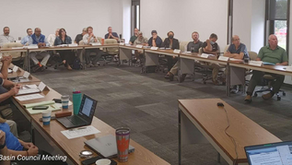Success Or Failure Determined by Addressing Rare Events
- JD Solomon
- Nov 8, 2021
- 2 min read

Rare events produce the greatest risk to facility and infrastructure projects. Traditional risks, often called project risks, are normally occurring in all types of projects. Traditional risks are usually “internal” to the project and within our ability to monitor, control, and mitigate to a great extent. Traditional risks are readily modeled based on probabilities and impacts, using probability distributions. As a design and construction industry, we are good at predicting and treating our traditional risks.
Rare events are extreme (high consequence, low likelihood). They usually are caused by external forces. Categories of rare events include Economic, Informational, Physical (key equipment), Human Resource, Reputational, Psychopathic Acts, and Natural Disasters. Rare events are often the “elephants in the room” that everyone does not want to discuss in the hope they will simply not happen. However, the reality is that not every category of rare event will occur on a project, but it is almost certain that a rare event from one of the categories will occur.
One example from the Human Resources category is the turnover of a local Board of Commissioners during the eight-year process of planning, designing, and constructing a wastewater treatment project. The introduction of a new majority creates an extreme event for the project because all the underlying assumptions and decisions are revisited which results in additional time, budget, and in some cases, termination of the project. The turnover of decision makers provides the greatest risk to any capital project.
Another example from the Natural Disaster category is the impact of a major hurricane (category 3, 4, or 5) on the same eight-year wastewater treatment plant project. In the southeast United States, impacts from a minor hurricane (Category 1 or 2) should be included as a project risk along with events like lightning strikes. Like the turnover of the Board of Commissioners, not every project will experience a major hurricane; however, the likelihood of experiencing one or the other is a game-changer.
The good news is that we can model the impact of rare events on facility and infrastructure projects. The modeling approach uses a combination of spreadsheets and add-in software that is incorporated with budget and schedule tools used to address normal project risks.
The key thing to remember is that we, as an industry, are good with project risks. The difference in success and failure on facility and infrastructure projects is addressing rare events.
JD Solomon, Inc. provides services at the nexus of the built and natural environment. Contact us for more information about project development services such a business case evaluations, risk and uncertainty analysis, third-party reviews, and stakeholder facilitation.




Comments